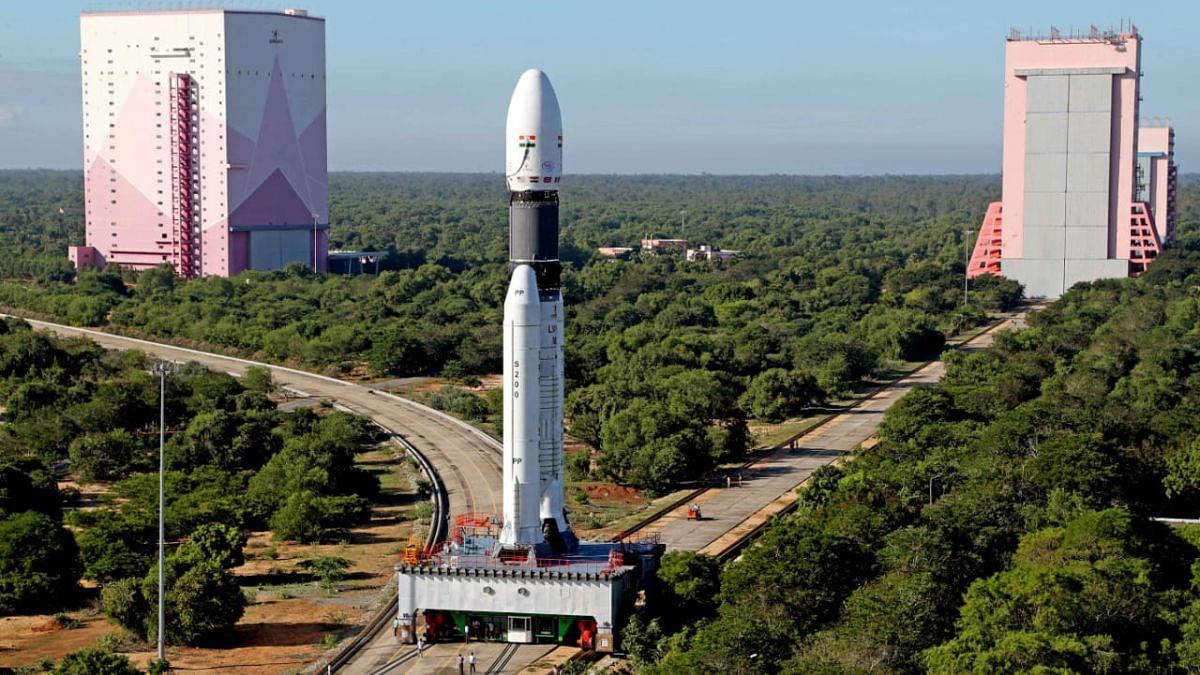
New Delhi: Onboard its biggest vehicle and the first Indian rocket with a 6-tonne payload, the Indian Space Research Organisation (ISRO) is set to launch 36 broadband communication satellites Sunday.
The Launch Vehicle Mark 3 (LVM3) mission is the first multi-satellite commercial mission for the rocket.
The launch is being done for the UK-based company OneWeb which is also supported by Bharti-Airtel. The mission was procured by ISRO’s newly-functional commercial arm, NewSpace India Limited (NSIL).
The LVM3 will leave the Satish Dhawan Space Center in Sriharikota on 23 October at 12.07 am, and head to Low Earth Orbit (LEO) at 1,200 km.
The 24-hour countdown before the launch has begun.
It is expected to be a day of many firsts, as this is not only the first time the largest Indian rocket is paving its way in the commercial space, but it is also a flight with the largest payload ever — of 5,796 kg. Moreover, this is the first commercial launch of the rocket undertaken by NewSpace India Limited (NSIL), a central public sector enterprise under the Department of Space, Government of India.
“As part of this mission, 36 OneWeb Gen-1 satellites, meant for global connectivity needs, will be launched from the spaceport into a circular low earth orbit of 601 km altitude with an inclination of 87.4 degree,” said ISRO.
OneWeb’s first launch with India
OneWeb Ltd is a global communication network that is powered by space and enables internet connectivity for businesses and governments. India’s Bharti Enterprises is a major shareholder of OneWeb.
This is OneWeb’s 14th launch but first collaboration with ISRO and NSIL in India. In this dual contract, OneWeb plans to put another 36 satellites in space with NSIL in January 2023.
OneWeb used to be a patron of Russian rockets, but in protest against the Ukraine war, they are looking to collaborate more with India instead.
The 36 satellites will be on a dispenser system made by the Swiss based Beyond Gravity, which is also teaming up with an Indian rocket for the first time.
OneWeb satellites are arranged in 12 orbital planes, with 49 satellites in each plane. The company plans to establish a total of 648 satellites for communication services and this mission will help them come closer to their target by bringing their desired constellation to 381 satellites. Each satellite takes 109 minutes to complete a full trip around Earth.
Each satellite payload functions over Ka and Ku bands, which enables data transmission back to Earth. The Ku-band uses frequencies in the 12 to 18 GHz range, while Ka-band uses frequencies in the 26.5 to 40 GHz range, enabling greater bandwidth transfer.
Aboard India’s biggest rocket
The LVM3-M2 rocket was earlier known as the GSLV-MK III launch vehicle but was renamed by ISRO as the most recent rocket is able to carry 8,000 kg of payloads into LEO and 4,000 kg of satellites into GTO. Chandrayaan-2 was also launched with the GSLV-MK III.
The LVM3-M2 rocket is a three-stage vehicle. The first stage is fired with liquid fuel, and with two strap-on motors which are powered by solid fuel. The second stage has liquid fuel again and the third is a high-performance cryogenic engine.
According to ISRO Chairman S. Somanath, the Chandrayaan-3 launch in June next year will also be aboard the same rocket.
Source: The Print

